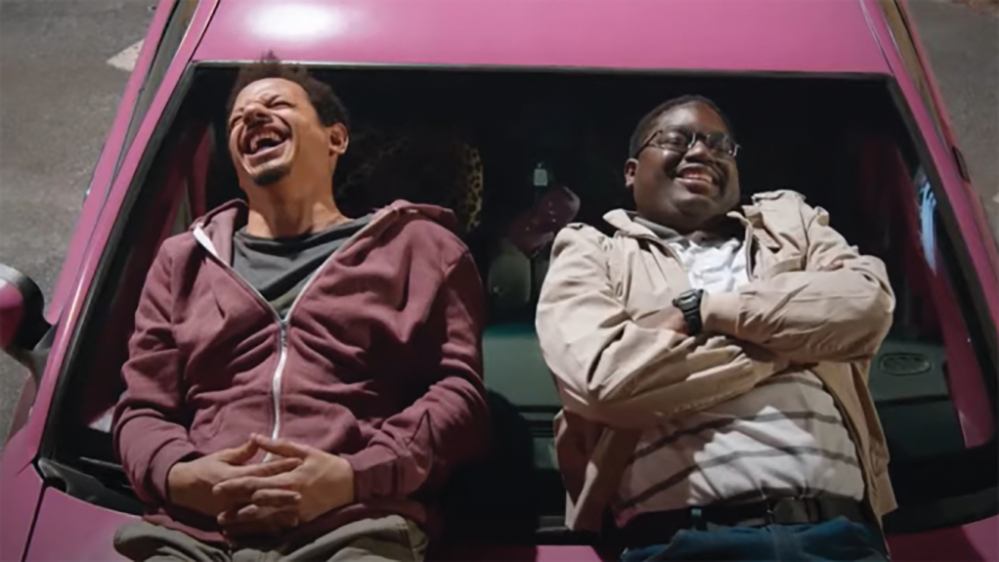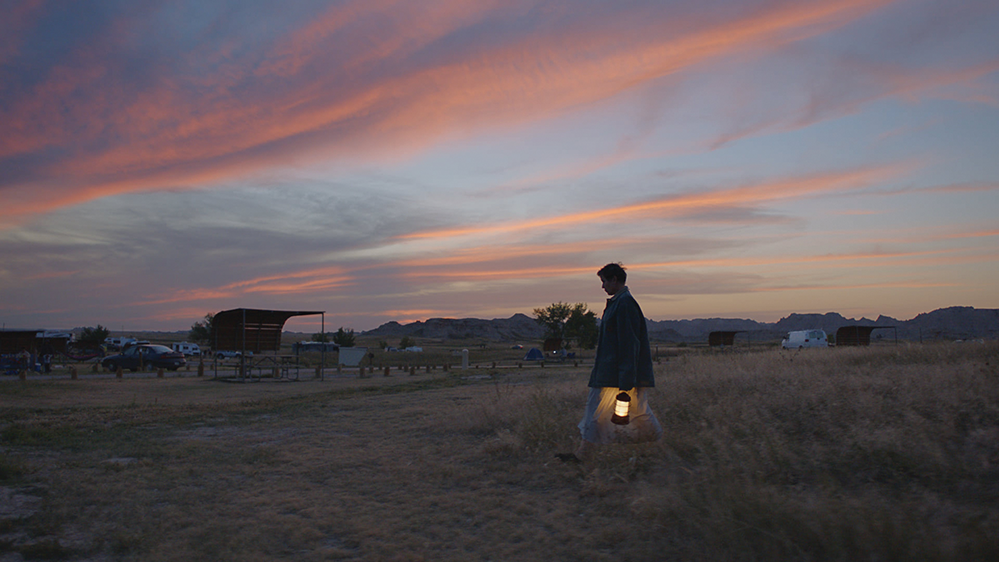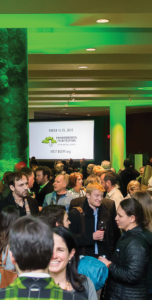
Screening over 100 films at nearly 30 locations across Washington, D.C., the D.C. Environmental Film Festival is informing and impressing audiences from March 15 to 25 with a broad selection of environmental cinema. The DCEFF, now in its 26th year, is the largest film festival in the District and the largest environmental film festival in the world.
“It takes a very small village about a year to plan this,” Maryanne Culpepper, executive director of the festival, said in an interview with The Hoya, noting the intricate marketing and scheduling efforts that underpin the festival’s continued success. The DCEFF is a meticulously planned and truly remarkable feat of programming.
The DCEFF was founded in 1993 by Flo Stone, an environmentalist who has spent a large portion of her professional career serving her community through conservation education. Her many achievements include serving as the Film Chair for the Smithsonian’s National Forum on Biodiversity, authoring the filmography for the Ocean Planet exhibit at the National Museum of Natural History and receiving Washingtonian Magazine’s first “Green Hero Award” in 2008 and the Rachel Carson Award from the Audubon’s Women in Conservation in 2015. In 1989, Stone cofounded Trees for Georgetown, an organization dedicated to preserving Georgetown’s historic character that transplants trees that have been damaged by inclement weather.
Despite Stone’s many achievements, DCEFF is arguably her most successful brainchild — last year, the festival had about 30,000 participants, a number that seems to be growing. One of the primary draws of the festival is the breadth of the topics that it covers: Films consider subjects such as food waste and ocean pollution but also discuss more niche and fascinating subject matter.
One of the highlights of the festival was the screening of “Jane” at the National Geographic Society on March 20. “Jane” is a 90-minute film detailing the life of Jane Goodall, a British secretary-turned-primatologist who is widely considered the leading expert in chimpanzee research. The film features footage from the 1960s that was rediscovered in 2014 and juxtaposes brilliant shots of Goodall’s experience with chimps against current interviews of her recounting her experience.
In a testament to the remarkable planning of the DCEFF, the screening of “Jane” was bookended by two wonderful supplements. Before the film’s start, the audience was first addressed by Culpepper and then by Kathy McLeod, a Bank of America expert in global financing and environmentalism who previously worked at The Nature Conservancy. Bank of America is one of the festival’s largest sponsors, and as McLeod stated, in giving capital to the DCEFF and similar important causes, “the bank lives the ethic of making the world a better place.”
After the introductory addresses, a clip was shown of Goodall speaking to the DCEFF audience and expressing her belief that this film was an accurate and inspiring reflection of her life.
“I hope you’ll feel something of the magic of exploring the unknown world,” she said.
Following the film was a panel with the executive director of the Jane Goodall Institute and the documentarian who made the first film about Goodall in 1989, both of whom were receptive to audience questions. This hands-on and interactive programming was provided by the DCEFF for only $10 per ticket.
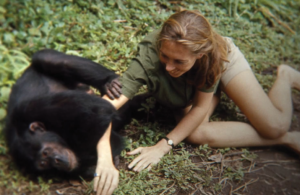
A less extravagant example of the DCEFF programming is that at E Street Cinemas. On March 18, the theater screened four short films as part of the festival, listed on the program as “Shorts Program 4.” The first was titled “La Cumbre,” or “The Summit,” and told the story of Kathy Pico, an Ecuadorean woman who lost her leg and then rediscovered her sense of joy when she tried to summit Mount Cayambe with a group of other amputees. “When I lost my foot, I put two feet on the ground,” Pico said. The film ended with a biting statistic — 80 percent of amputees are in developing countries and only 2 percent have access to prostheses — and a nod to the Range of Motion Project, which gave Pico her prosthesis.
The second film, “Return from Desolation,” focused on Garrett Eaton, an Afghan-war veteran who says that he was “saved” by Desolation Canyon in Utah. The film features sweeping shots of the canyon and of Eaton rafting on the river, as well as touching close-up shots of Eaton describing his “four rad kids” and the way that his family comes together in the outdoors.
The third film was titled “The Mirnavator” and focused on Mirna Valerio, an overweight runner from Brooklyn who reads an over and reacts to a hateful email calling her a “fraud” for insinuating that people who are overweight can run and be beautiful. Valerio, an endurance athlete who spends her weekends training and running 30 kilometers at a time, was sunny and positive in her response.
“I feel strong and powerful, and in that, I feel beautiful,” she said, describing how constantly proud she feels of the athletic feats that her body is capable of.
“A Steelhead Quest: Portrait of a Rivered Life” was the fourth and final film shown in “Shorts Program 4.” The film focused on Terry Myers, a steelhead fisher who embarked on a quest to catch a steelhead in a different river for each month of an entire year, a journey that brings her and her husband across the country and even to Alaska. The film discusses Myers and her husband’s lives on their ranch and the joy that they find in steelhead fishing, as well as the ways in which it has diminished because of environmental changes. “Shorts Program 4” exemplifies the diversity and scope of the DCEFF’s programming and the range of environmental issues that the festival works to shed light on.
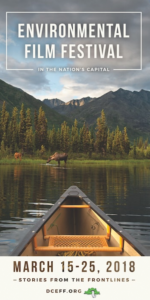
In addition to its broad scope, one of the cornerstones of the DCEFF is its reach: Selections from the festival are screened at myriad locations across the city, which allows residents to participate in the festival without travelling long distances.
“Our founder Flo Stone started this festival 26 years ago, and it was always her ambition that it was a citywide festival for the people,” Culpepper said. “It is part of our DNA that we want to be across the city. We don’t want to just focus on one place.”
The nearly 30 locations that house the festival include movie theaters, embassies, universities and museums; this year’s events took place at the National Archives, E Street Cinemas and the Embassy of Canada, among others. Culpepper feels that this is important because it enables interested citizens from to partake in the festival regardless of geography. Despite the broad span of locations, the DCEFF has four signature venues: National Geographic Society, Carnegie Institution for Science, E Street Cinema and the Naval Heritage Center.
No matter the location of the screening, the DCEFF is admirably well-organized and welcoming to all viewers. At each location, volunteers in green aprons greet guests and direct them to the screening; a table laden with DCEFF flyers and schedules stands near the theater; and each film is presented cheerfully presented by an informed and excited volunteer.
In this way, and in many others, the DCEFF is truly remarkable. It presents high-quality, easily accessible films, and despite the spread of locations and co-occurrence of many of its screening times, the festival never seems rushed or frazzled, but rather like a labor of love. Staying true to the goals of its founder, the success of the DCEFF is driven by the passion of its team and the strength of its message of environmental preservation.
“I really hope that people walk away from one film or 12 films and are inspired to do something to make the world better,” Culpepper said. “If everybody walked away from one of these movies changing one small thing that they did, that’s also going to affect somebody else and somebody else — it’s a way to change the world. And that’s my goal.”










